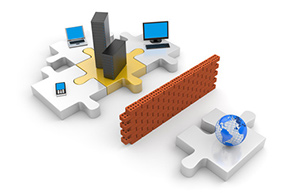
Our Platform

Green Design
ECO-FRIENDLY
Our platform is designed to work efficiently using high-density deployment models and reduced carbon footprint. By optimizing our usage of natural resources with intelligent hardware, we can minimize impact to the environment for the benefit of future generations.

Plan First
ALTEXXA GROUP R&D
Service design and solution deployment begins with the requirement of in-depth research to investigate and determine any and all considerations for product development. Our engineers work with vendors to approach service design from multiple angles.

Secure Data
CORPORATE PROTECTION
Maintaining data integrity is a crucial component of our service design and we incorporate multi-layered security and authentication protocols into our platform. This addresses requirements for both physical and logical data security combined with external variables.
Network Design
Maximize your network presence through diverse peering and routing.
We work with transit providers and carriers to develop network deployment solutions to reduce latency impact and to provide global content distribution on scalable infrastructure. Our design incorporates factors such as the geographical location of target markets, existing network paths, peering point availability and bandwidth requirements at distribution hubs. We identify possible failure points and incorporate additional redundant paths to reduce impact from geographical events. Additional design emphasis is placed on high availability and redundancy at each site to work around device failures and also required maintenance. Further design optimizations are made at the aggregate layer to build upon our scalable infrastructure model which allows for network growth within the organization.
- Developing low latency networks with bandwidth availability and redundancy.
- Working with carriers and peering networks for global implementation.
Content Delivery
Deploy scalable appliances for long term growth and application expansion.
Working within our vision for global application deployment, utilizing a content delivery solution can assist in offloading bandwidth usage to a network of mirrored hosts each deployed in key geographical locations. A content delivery system will reduce delivery time to the end user by shortening the delivery path across network carriers. We review factors including content type, requirement for dynamic content changes and target user markets to create an optimized delivery solution. Our content delivery implementation works with a level of automation to replicate data from the primary host cluster to the end delivery points within the network. Considerations for data security and integrity are also critical, and we utilize encrypted delivery tunnels within the content network and end-point security appliances at each distribution hub.
- Overcoming geographical limitations with global content delivery.
- Improving delivery time and ensuring security during data replication.
Virtualization
Consolidating infrastructure for greater ROI and reduced carbon footprint.
Deploying scalable infrastructure with reduced carbon footprint relies heavily on virtualization models which helps consolidate applications into efficient back-end hardware clusters. We utilize base hypervisor nodes with hardware level high availability options, powered by a software level orchestrator and automation solution to intelligently monitor and distribute application load. A virtualized datacenter deployment allows for failover to improve critical application uptime while providing additional benefits to system administrators for scheduled tasks and infrastructure changes. Virtualization is a key component in our corporate vision and beliefs as it allows for more efficient use of datacenter resources and offers ROI benefits.
- High-density virtualization deployments to improve ROI.
- Reduce impact risk with high availability clusters and failover.
Data Security
Intelligent security design with real time monitoring and filtering.
Our deployment design includes multiple layers of security as considerations must be made for the physical level, transit level and application level. We protect remote sites using edge security appliances with advanced intrusion detection and prevention algorithms, while also maintaining data security with high encryption for inter-site communication. Specific ACLs are also used to ensure only trusted users are authorized access, and further security is offered by the use of multi-level authentication. Further application level security is offered within the application itself, and external access to critical applications passes through additional layers of monitoring and authentication.
- End-point security and encryption for site-to-site connectivity.
- Advanced algorithms for IDS/IPS combined with layered authentication.
High Availability
Utilize redundant back-end server clusters with failover management.
Incorporating a deployment design with virtualization allows for fault tolerance and high availability to protect applications from unexpected failure. Our deployments based on a high availability model offer levels of redundancy both inter-site and intra-site which are achieved using redundant storage platforms and data replication across physical infrastructure. Core infrastructure will rely on redundant storage platforms and a multipath network aggregate layer to provide the required level of high availability. This design model works in conjunction with content delivery systems and diverse WAN network paths. Additional availability is offered at the physical infrastructure level using a minimum redundancy design model of 2N for electrical and cooling systems.
- Inter-site and intra-site high availability and redundancy.
- Utilizing virtualization, redundant storage and network platforms.





